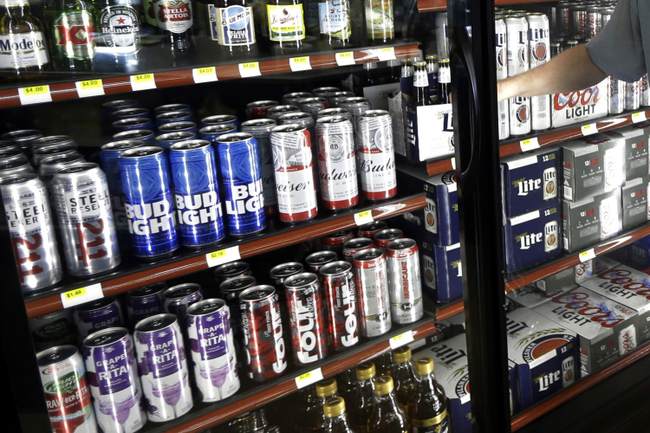
[ad_1]

There are few things better after a hot day spent working outside (or any day spent doing anything, but you get the point) than an ice-cold beer, straight from the fridge, with those lovely little beads of condensation clustering on the bottle. That first long pull just sends all the heat and humidity scurrying for the horizon and makes you feel like everything’s going to be all right.
Now it turns out that there is a sound reason, a scientific reason, why ice-cold beer tastes so good.
When beer is cold, the ethanol appears chain-like on a molecular level, bringing out the ethanol-like flavor. As beer becomes warm, the ethanol creates clusters, and that flavor fades.
“This is why we drink cold beer,” [the study’s lead author, Lei Jiang of the Chinese Academy of Sciences,] said.
Experts warn though that there is such a thing as “too cold” when it comes to beer. According to the American Homebrewers Association, flavors and aromas in the ale may be masked by the cold as it “slows the volatilization of aromatic compounds.” If those aromas aren’t released, your beer can seem “thin and tasteless.”
In most cases, the group suggests serving beer when it is between about 40° and 50° F.
Normally I’d be skeptical of Chinese research, especially after the events of 2020, but I’m inclined to accept these findings as consistent with my own experience.
The researchers also looking into something that, if they’d asked me, I could’ve told them: The packaging counts, too.
If you drink beer, you may not have needed researchers to tell you that warm beer tastes vastly different than cold beer. Another aspect that can impact beer’s molecular structure and, ultimately, its taste? The way it’s stored.
Think about the last time you were down the beer aisle. You most likely didn’t see any beer sold in a plastic container. That’s because beer can lose its carbonation and become stale when stored in plastic bottles.
“Plastic is simply not a good package for beer,” Chuck Skypeck, the director of technical brewing projects at the Brewers Association, previously told Nexstar. “The molecular structure of most plastics is not good at keeping carbonation in the package/product or keeping oxygen out to prevent staling.”
Not only plastics, but clear glass; I know some beers are sold in clear glass bottles, but the dark amber glass prevents UV light from giving the beer a skunky taste, as well. My personal favorite, Alaska Amber, comes on those lovely dark bottles and is a superior tipple. It’s enough to make one hop-ful for the future.
Now I’ll confess to having drained the dregs of a room-temperature brew once or twice, although I wouldn’t do it again today, now that I’m older and… well, older. Once bitten, pint shy, after all. Today, I have a lovely, big fridge to keep my beer cool, so ale’s well that ends well.
See Related: Proposed Legislation in Tennessee Aims to Prohibit Retailers From Selling Cold Beer and Alcohol
Whither Bud Light on the One-Year Anniversary of the Dylan Mulvaney Debacle?
The temp rating recommended in this bit of research seems a tad high; I’d go between 35 and 40 Fahrenheit (Celcius is fine for countries that have never put a man on the Moon, but I’ll stick with good American Fahrenheit) as I think anything above 40 is barley cold enough.
Yes, it’s true – there’s nothing like a frosty mug of suds. Now we know not only that this is true, but why this is true, and there’s no reason to ever again subject ourselves to a skunky, warm beer.
This seems appropriate.
[ad_2]
Source link